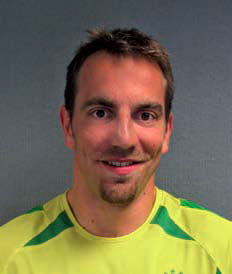GEMOC participants
The host institution for GEMOC is Macquarie University (in the Department of Earth and Planetary Sciences).
There is a close collaboration with CSIRO Exploration and Mining (EM) (North Ryde), State Geological Surveys, GA (Geoscience Australia) and ANU/RSES across an increasingly broad range of projects.
Collaborative research, teaching and technology development links have been established with other universities nationally and internationally and these evolve as new alliances become relevant to new directions.
GEMOC has developed ongoing collaborative relationships with national and international industry and end-users such as Geological Surveys globally (eg Australian states, Canada, Norway).
GEMOC has a wide network of international research and teaching development partners and collaborators (see Appendices 1 and 3).

CHANGES IN 2004
 Dr Olivier Alard commenced an ARC Postdoctoral Fellowship. This project will develop novel methods for analysing metal stable isotopes (MSI: Mg, Fe, Cu, Zn, Ga) and applying these to define their isotopic composition in Earth's key reservoirs and in reference materials such as the chondritic meteorites; and to quantify and understand the causes of MSI fractionations during geological processes. A unique combination of in-situ and solution techniques will be aimed at establishing a conceptual and theoretical framework for the use of MSI in geosciences.
Dr Olivier Alard commenced an ARC Postdoctoral Fellowship. This project will develop novel methods for analysing metal stable isotopes (MSI: Mg, Fe, Cu, Zn, Ga) and applying these to define their isotopic composition in Earth's key reservoirs and in reference materials such as the chondritic meteorites; and to quantify and understand the causes of MSI fractionations during geological processes. A unique combination of in-situ and solution techniques will be aimed at establishing a conceptual and theoretical framework for the use of MSI in geosciences.

Dr Anthony Dosseto commenced an ARC Postdoctoral position. He is currently using U-series disequilibria to study Australian river systems and soils. The objective is to better understand how soils develop and sediments are transferred under the various conditions that consitute the Australian climate: from desert to wet tropical. Other projects are under way in the Carribbean Islands and South American river systems.

Dr Helen Williams was appointed the GEMOC-Nu Fellow (commencing 2005) with 3-year funding from Nu Instruments to investigate isotopic systems relevant to the evolution and composition of the Earth, using both conventional and in situ analytical techniques.

 GEMOC ARC National Key Centre
GEMOC ARC National Key Centre